Most flower growers have had begonia at least once in the collection, as this is one of the most common indoor plants, with a large number of varieties, very gratefully responding even to minimal care at home. The reason why the flower is so accessible and loved lies in its ability to adapt to living conditions, as well as in the abundance of colors and shapes, due to which they can be confused with roses, camellias, daffodils, carnations and others.
Content
Homeland begonia, the history of cultivation and signs
In the 17th century, the Frenchman Michel Begon, a plant collector, organized an expedition to the Antilles, during which his first monk Plume was found, brought to Europe and described the first six copies of begonia. Today, more than 900 species have been found in nature, and several thousand more have been bred by breeders.
A third of all species live in begonia - in Africa. Already from it, the plant got into Sri Lanka, the Himalayas, India, feeling good in the tropics, subtropics and highlands.

This flower is mentioned in the 14th century by the British, who sang it as a symbol of purity. And already in the 18th century several species came to England, which became the progenitors of modern tuberous varieties. Their hybridization, according to records, began in 1860, and reached a peak before the First World War. It was then that begonia became very fashionable among rich flower growers, and they competed in breeding large and terry varieties. Then there was a pink-flowered variety, which is now considered a classic.
The most famous owners of the nurseries were Charles Langdon and James Blackmore, and their business is still continuing with a generation of heirs supplying high-quality begonia seedlings.
Overgrown plant and superstitions. Among the Indians from South America, begonia was a sacred flower that helped them in difficult times, including after Columbus arrived and the Spaniards invaded their lands.
As for the influence of begonias in the domestic plane, according to the omen, it brings monetary success, family happiness, connects hearts. Caring for a flower is the key to happiness, because its withering or illness will affect the result.
You need to give begonia only with good intentions, as well as accept as a gift - only from those who really treat you well. Otherwise, negative energy can be brought into the house, which will affect the atmosphere in the family and even the health of the household.
A successfully growing resident of the tropics gives self-confidence, renews strength, reconciles spouses, incites past passion and even helps to find a soul mate. The action of the plant is everywhere positive, and only in Russia there is one bad omen: an untimely blooming flower announces the death of a family member. In other countries, begonia is exclusively good.
Variety characteristics, species diversity with photo
Several thousand hybrids provided such a wide range of differences that it is rather difficult to make an average description of begonia. They are divided into decorative foliage and flowering, annual and perennial, ampelous, bushy and creeping, rhizome and tuberous. But thanks to their belonging to the same Begoniev family, care for them is approximately the same.
This is a herbaceous shrub, reaching a length of succulent fragile lashes up to 2 meters. The leaves are very diverse in shape and color, asymmetrical. Size ranges from a few centimeters to several tens. The surface is fleecy or smooth. Flowers are collected in inflorescences, simple up to 2 cm and terry up to 20 cm.
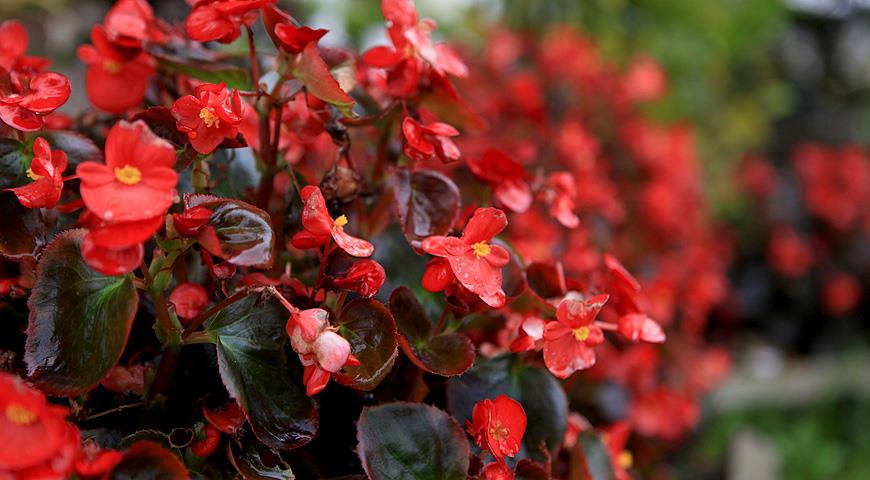
Perhaps, descriptions of species and photos will help to understand the assortment and choose a room flower by heart.
The decorative foliage group is represented by such species:
- Royal - the name was given for its brightness and was chosen as a prototype for many hybrids. As you can see in the photo, it is very photogenic and decorative. The rhizome is thickened, leaves with a small edge, a serrated edge, a pointed end, grow to dimensions of 20x30 cm. The color is multicolor, with brown, brown, bronze, raspberry, purple, silver, red. Blooms inconspicuous pink flowers.
- Tiger - compact bush does not exceed 25 cm. Coming from Mexico. Creeping shoots are covered with pile, as well as the wrong side of the spotted oval leaves, colored with different shades of green and brown in the form of spots. The flowers are small, soft, collected in inflorescences.
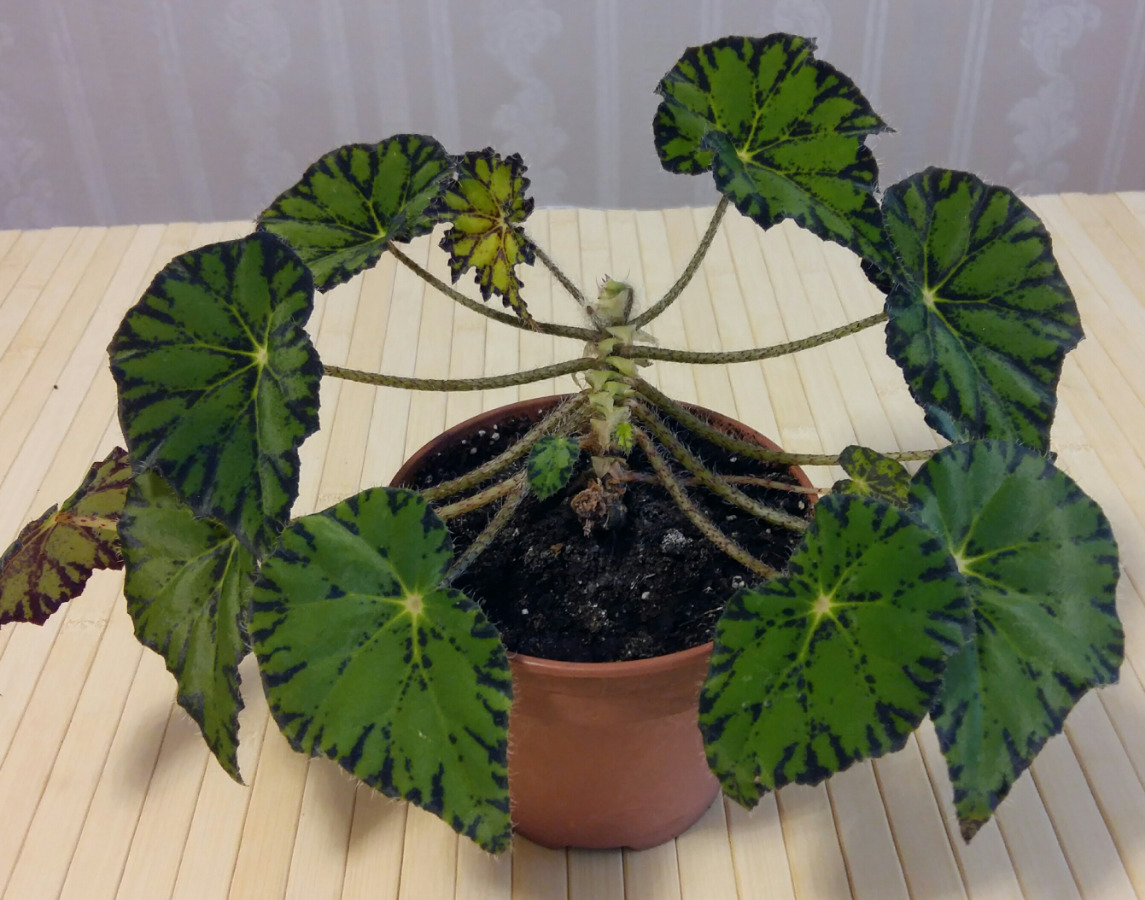
Tiger begonia - Coral - differs from the previous growth, can reach 1 m. Shoots are naked and erect. Leaves 20 cm long are covered with silver spots. Coral flowers collected in panicles. Popular indoor varieties are still hogweed, red-leaved, carolinolate, brilliant, Mason. Decorative-flowering begonias are especially interesting for breeders for the opportunity to observe magnificent flowers.
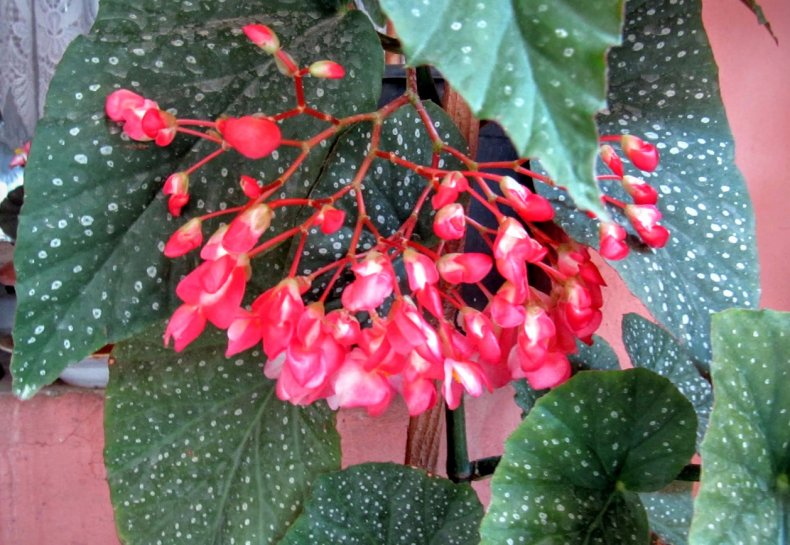
Coral begonia - Everblooming - represents a bush, which under comfortable conditions can reach 60 cm. Often they are planted as a group for density. The leaves are smooth, bare with a small edge, green, sometimes red, 6 cm long. The flowers are small, up to 2.5 cm in diameter, simple or double, white, pink, orange and red. They do not bloom for long, but succeed each other, so the flowering time is quite solid - more than six months, and in good circumstances it happens even in winter.
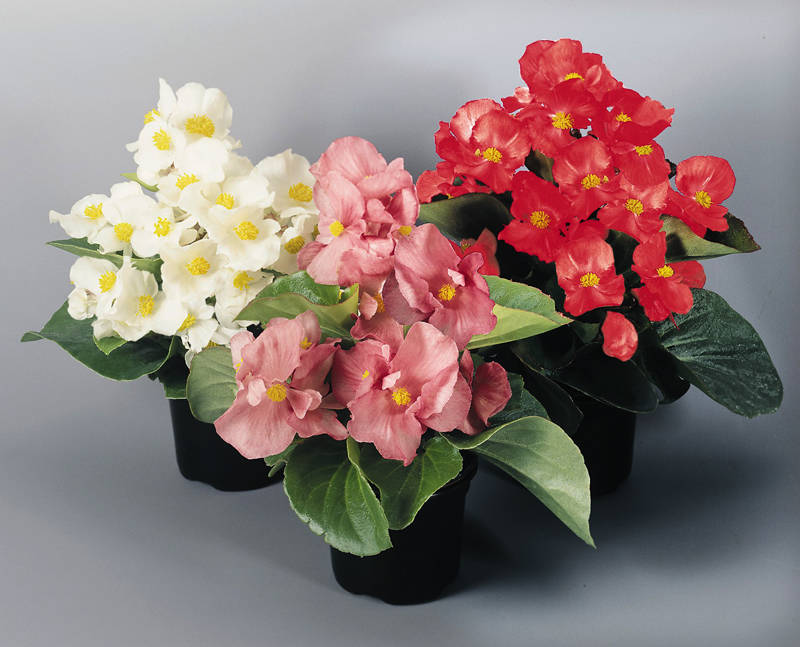
Begonia ever flowering - Elator is very popular and is often used instead of a bouquet for a gift. The height of the bush does not exceed the mark of 40 cm. Glossy bright leaves serve as a backdrop for large double flowers, similar to roses. The colors are also displayed the most diverse, including multicolor.

Begonia Elator - Ampelnaya is another representative of the favorites of collectors. It is decorated with walls, shelves, arches in the house, balconies and terraces. It is interesting precisely for its falling lashes, which is why it is usually grown in hanging pots. The stems branch and hang in cascades along with flowers of different shapes, sizes and colors.
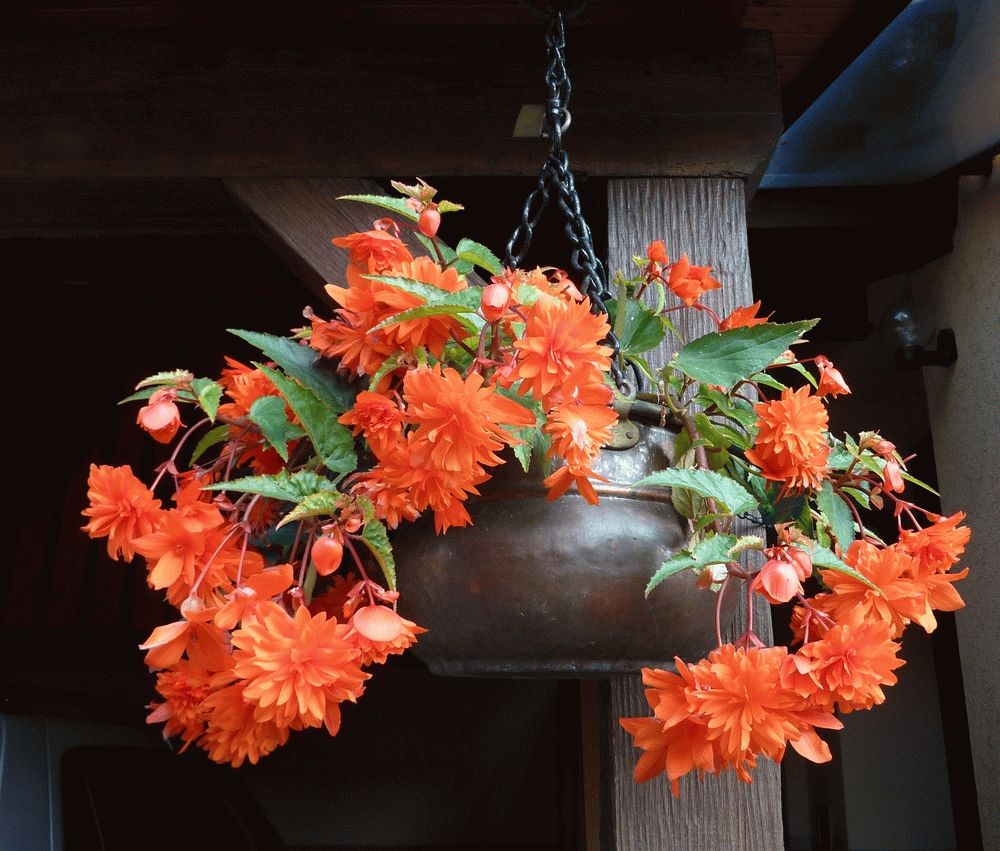
Ampel begonia
Of course, this is only a small list of varieties, and their number is growing - so begonia is popular and interesting for gardeners and breeders.
Begonia care at home
Despite the tropical origin, the flower is considered unpretentious. Therefore, his master does not need to do anything special to see him in all its glory.
Watering and feeding
The plant needs good watering, but the line beyond which there will be overflow and stagnation of water is quite thin, so care and good drainage are important. Only the topsoil in the pot should dry slightly. The average frequency of watering is twice a week. In the heat, you will most likely need to do this every other day, and in winter, reduce it to once a week.

Water for irrigation requires clean, without impurities that are in the tap. Chlorine and calcium salts are especially dangerous. Therefore, you need to pass water through a filter or use melt, rain, key. For plant comfort, the water should be slightly warm.
The type of dressing depends on the period of development of the plant and its species. Everyone at the start of the growing season, and decorative and deciduous for the whole season, needs nitrogen-containing fertilizers to build green mass. During flowering, potassium and phosphorus are used. All funds must be applied along with water for irrigation, so that the concentrated dose does not burn the roots. The frequency of fertilizing - 1 time in 10 days.
Lighting
Begonia is photophilous, especially its flowering varieties. This is dictated by ancestors who lived in the equator area. But direct rays are harmful, so you need to choose eastern or western windows, or to shade the pot with a curtain. The zone in the back of the room is suitable only for decorative and deciduous varieties.
It is advisable to choose a place once and not change it, the flower loves stability and can respond to a change of place by dropping buds or stopping growth.
Temperature
Ideally, the air temperature should be stable - 18-22 degrees. But in summer, the plant is able to withstand a higher one. In winter, the limit of decrease is 15. At the same time, it is important to monitor other conditions: watering, humidity. Combinations of heat with dry air and low temperatures with high humidity are especially dangerous.
Diseases, pests and treatments
With deviations in living conditions, the plant weakens and becomes a victim of insects, viruses, bacteria and fungi. Often they go in a complex, for example, the midge damages the roots, and a fungus settles on them, finishing the plant.
Begonia Pests:
- Spider mite. Appears at low humidity in the room. It sucks the juices from the plant, and it stops in growth and development.
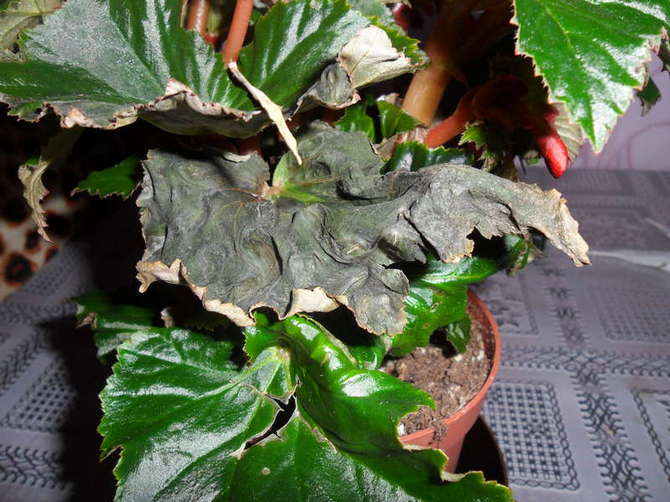
Begonia disease - Moshka: Drosophila, whitefly. It is born during the stagnation of water in a pot, pan and rotting of fallen leaves and other organics.
- Aphids suck juice and leave sticky syrup on the leaves, all of which together undermine the vitality of the flower.
- Nematode is a small worm that settles in different parts of the plant and feeds on them, slowing growth, altering its shape and ultimately leading to death. In the early stages, it is impossible to notice infection, and in the later stages, it is already useless to do anything. The plant is unlikely to be saved, and it becomes a threat to others, so it needs to be destroyed, and the pot and other objects should be decontaminated.
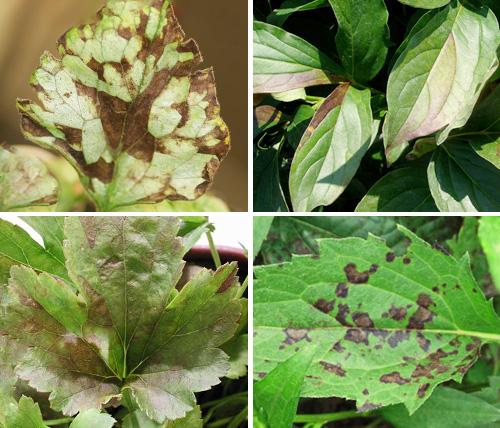
Nematode sheet
Methods of control: mechanical removal of insects by washing and sticky traps, and then - treatment with an insecticide, most often 2-3 times to destroy eggs and larvae.
Begonia also has incurable diseases, bacterial or viral: mosaic, bacterial spotting, bacterial wilting. In the case of their diagnosis, the flower is thrown so that it does not infect others.
Diseases that can be successfully combated: powdery mildew, botritis, gray and black rot. All of them are caused by stagnation of water, humidity, causing rotting. You can cure the plant if you remove the affected areas and treat it with an antifungal drug. And most importantly, fix the care mistakes.
Soil selection and preparation
Begonia prefers soil acidity 5.5-6.5 pH. It can be achieved by combining sheet land, sand, peat, turf land in a ratio of 2: 1: 1: 1. Or buy a finished one, marked "for begonias," in a garden store.
Hygiene
Here we are talking about the purity of leaves - important organs involved in the processes of nutrition and respiration. Dust flying in the air is harmful in itself, as it covers the surface of the sheet, and the content of harmful substances.
You can remove dirt with a dry cloth or cotton pad, as if sweeping away dust. In some cases, a warm shower is allowed if the plant does not bloom at this time. After washing, let it stand in the bathroom and dry. You can also gently wipe the leaves to eliminate sediment from tap water.
How to propagate and transplant a flower at home?
Begonia is very easy to breed in any way. The old plant can simply be divided into parts - divide the rhizome or tubers. In addition to this option, there are still ways that you should dwell on in more detail.
Leaf
This method allows you to get several begonia seedlings from each healthy leaf. To do this, the sheet must be divided into segments so that each has a vein.
The veins need to be damaged a little, roots will soon be in these cracks. The sheet can not be cut completely, just scratch the veins. Lay the sheet on wet sand, fix. Water over the pan.
You will need to wait for the result up to two months. When the first leaves begin to appear, plants can be transplanted into separate pots and taken care of as adults.
Seeds
It is advisable to sow only professional seeds. Those that you can collect yourself can prepare a surprise in the form of germination of a completely different kind of begonia, since most of what is grown today is hybrids, they do not give the same offspring.
If you have purchased seeds, then they need to be scattered on the wet surface of the substrate without falling asleep, and put under the glass in a warm, bright place for germination.
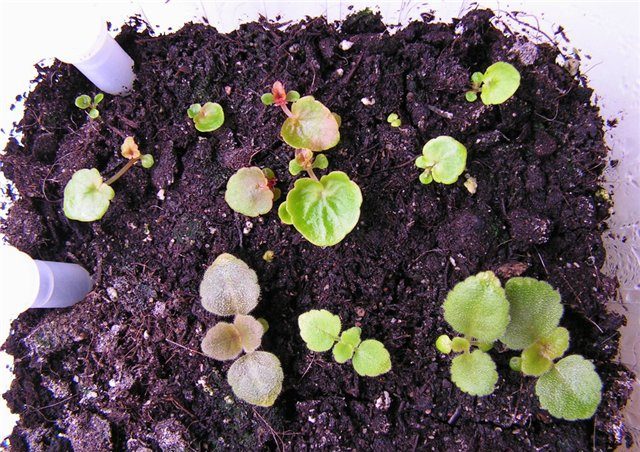
It is necessary to remove the transparent shelter after the emergence of sprouts, and to dive into separate pots - when the begonia seedlings acquire 3-4 leaves.
Cuttings
Too long lashes of an adult begonia can be shortened, and cut from them cuttings for rooting. Each part should have 3-4 sinuses with a kidney or leaf. Put them in water with the addition of a root.
After 4 weeks, white roots will appear there, then the plants are planted in loose soil mixture and grown until leaves appear.
Cuttings can not be kept in water, but powdered with charcoal and stuck in a tray with soil. To plant in pots after rooting and the beginning of the growth of new leaves.
A transplant of a plant, a new one bought or one of its own, the pot of which became too small for it, occurs with a partial replacement of the soil, but without thoroughly shaking it off the roots, as they can be damaged. The flower should be inserted into a new pot with good drainage and pour the earth around the edges, slightly tamping. Water and put in the usual place for him.
Common Growing Questions
The naughty begonia adapted perfectly in our apartments, and is ready to delight its owners with bright leaves and flowers. She just needs to help a little bit with this, providing attentive care.

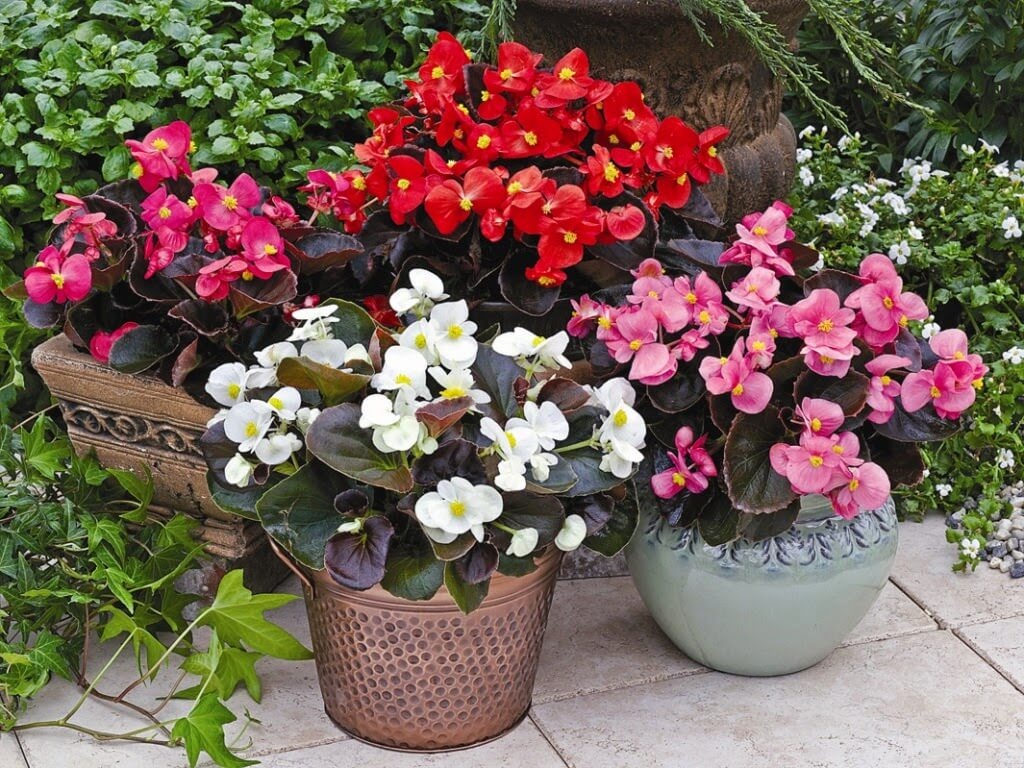
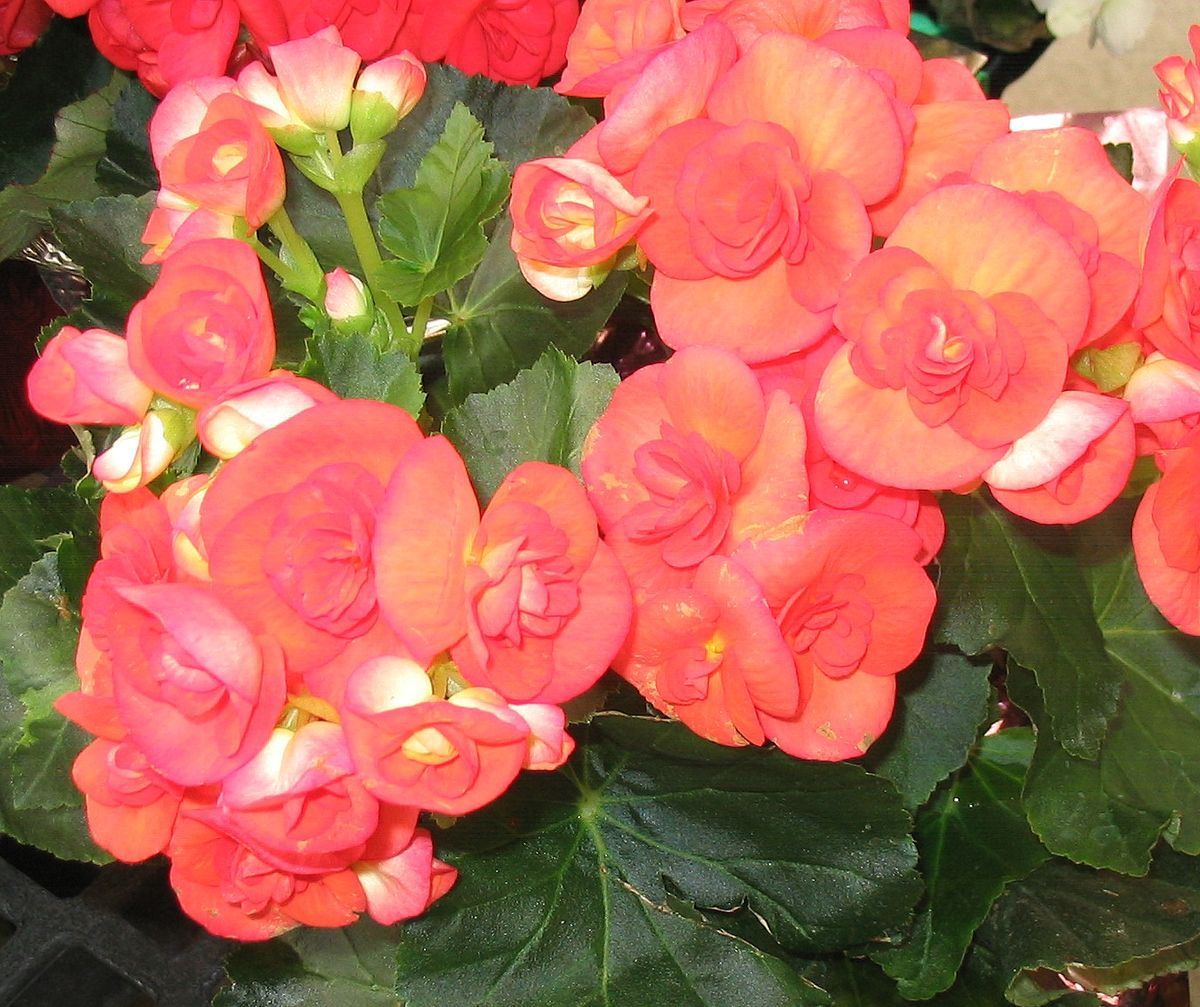
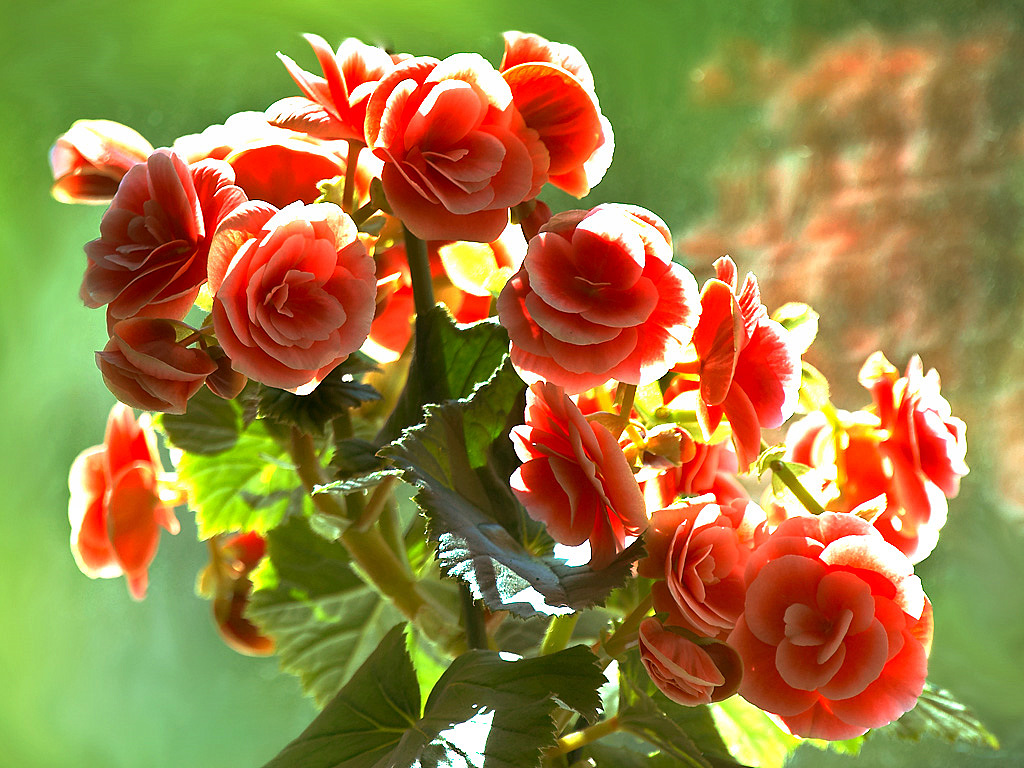
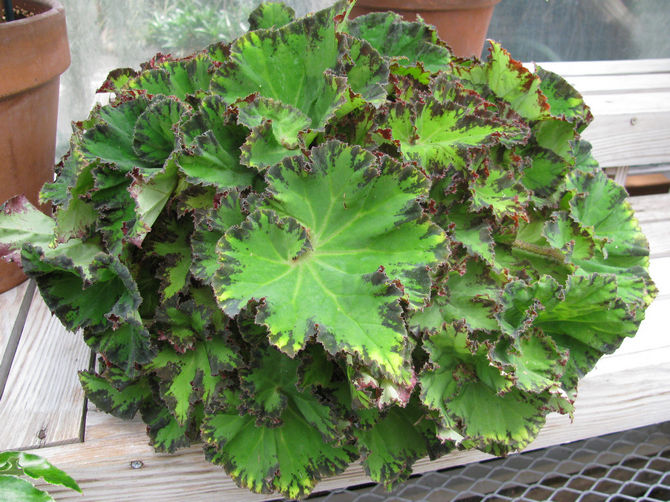

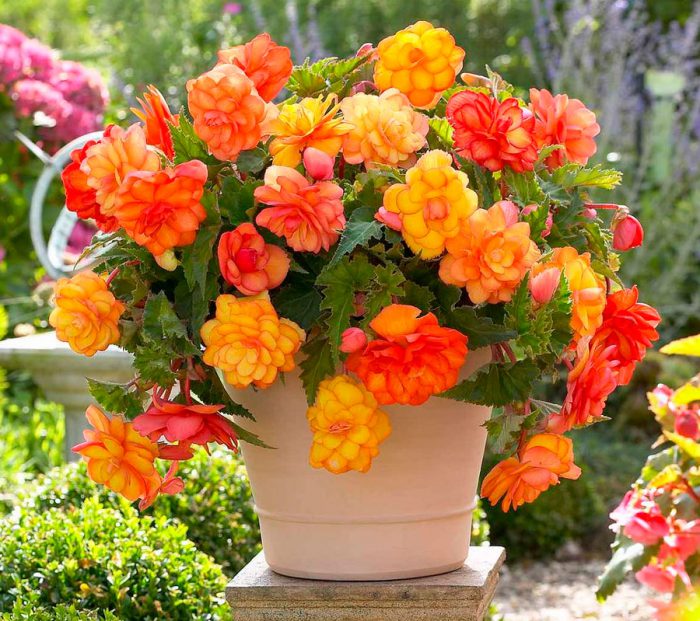
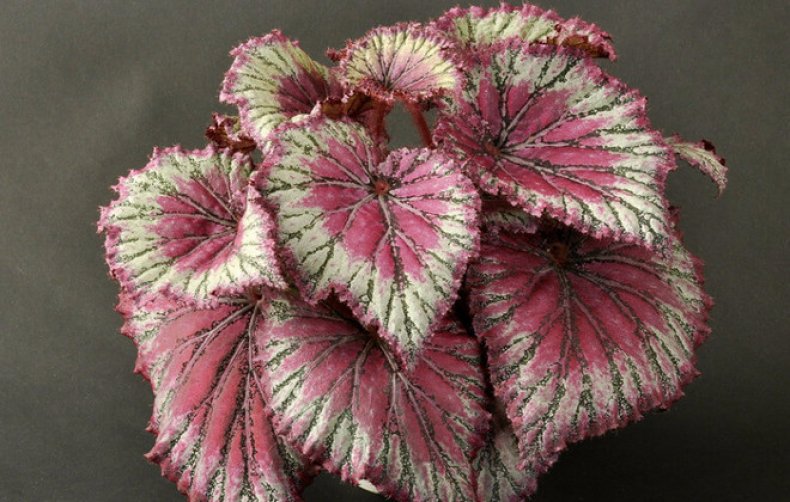
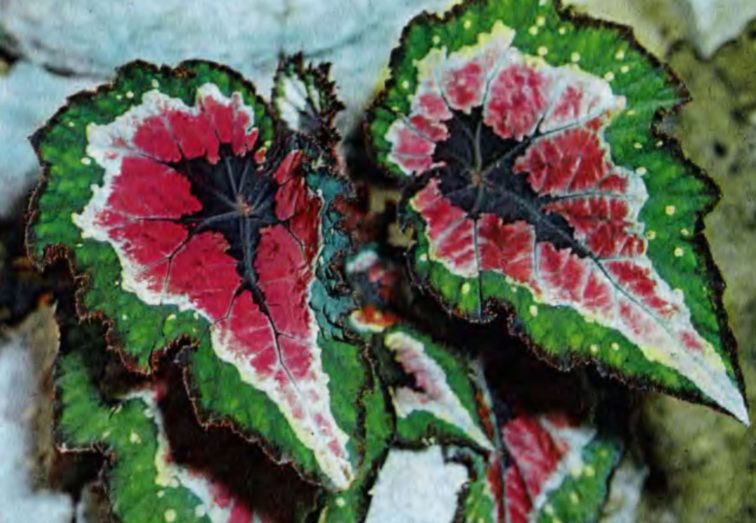
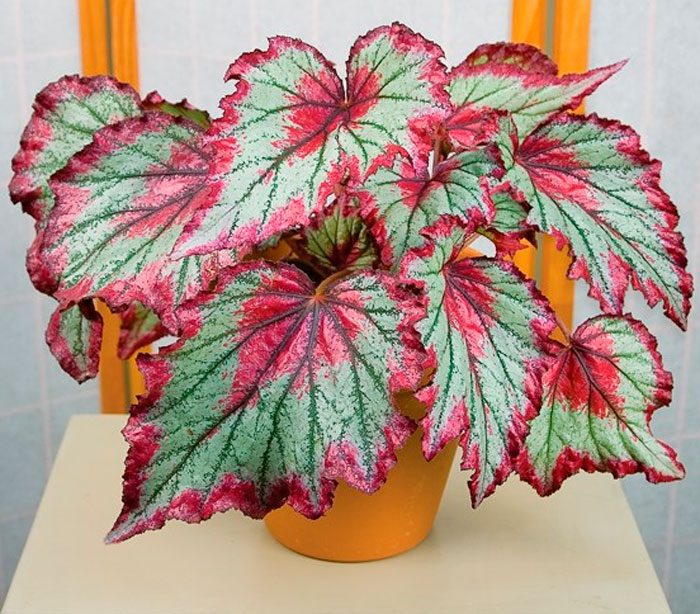



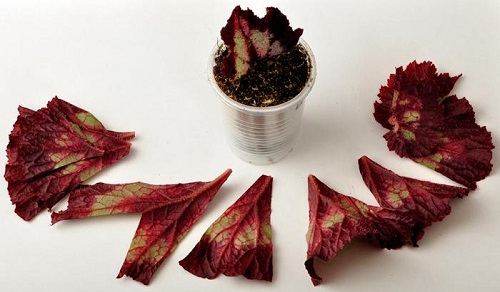
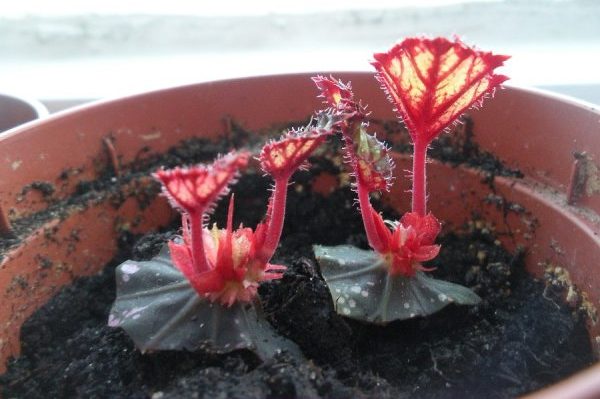
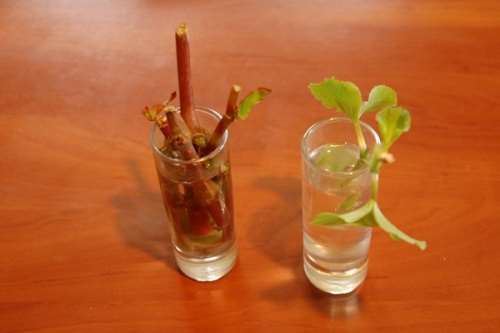
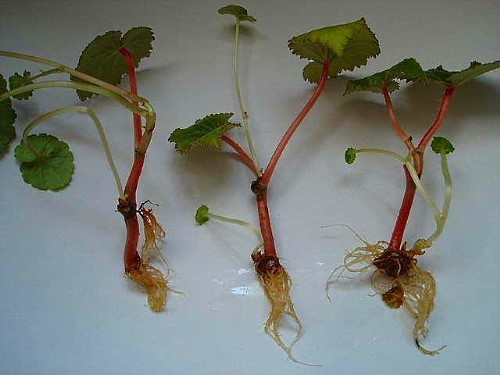
 10 beautiful annuals that bloom all summer
10 beautiful annuals that bloom all summer Sow in the ground, without seedlings: 10 beautiful and unpretentious flowers
Sow in the ground, without seedlings: 10 beautiful and unpretentious flowers Platicodon planting and outdoor care
Platicodon planting and outdoor care Hosta - planting and care in the open ground in the Urals
Hosta - planting and care in the open ground in the Urals